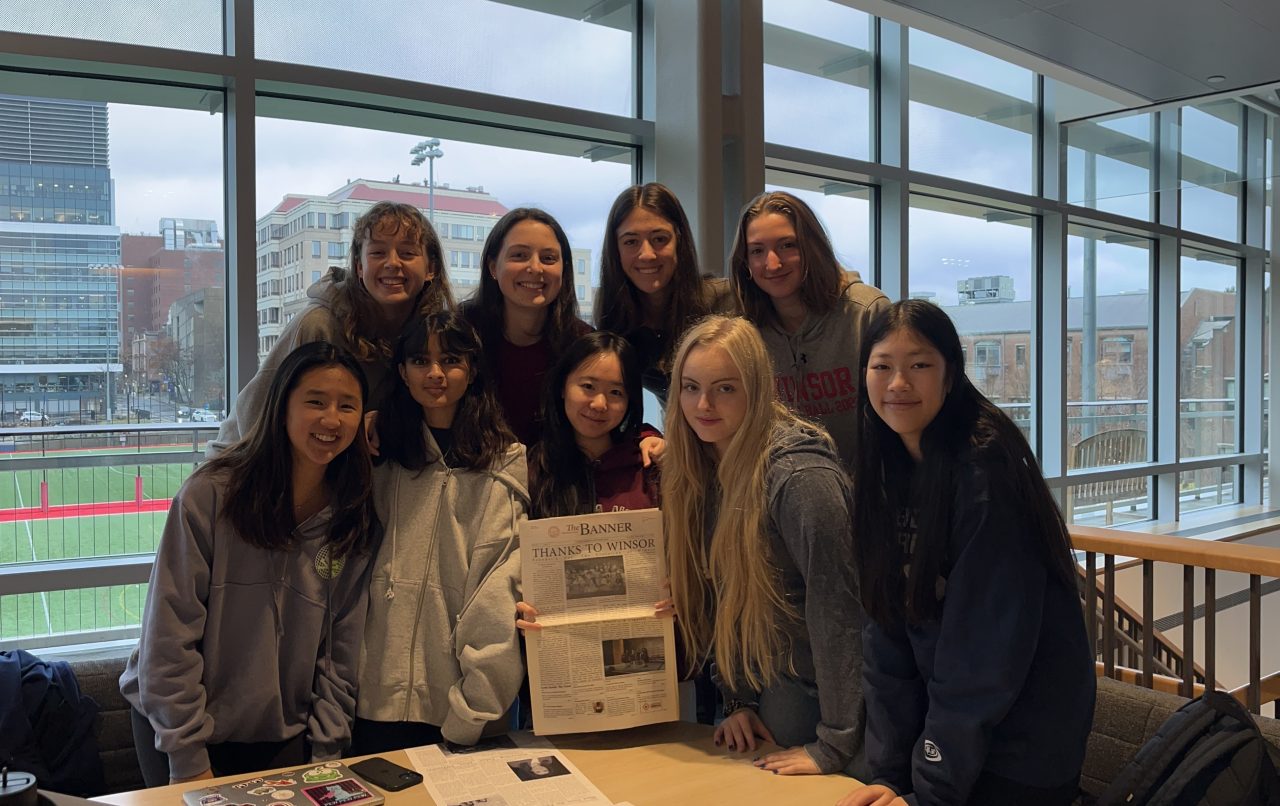By Caitlin S. ’21
When the Lubin O’Donnell Center was first revealed to the Winsor community in April 2015, students rushed into the building with awe and excitement. After years of anticipation during the construction process, the community could now finally use the modern addition to Winsor’s red brick campus. Ms. Geromini, the Director of Operations & Auxiliary Programs at Winsor, explained that “enhancing the offerings for our PE program was imperative.” Some crucial features of the building included a large fitness room, a multi-purpose room for additional offerings, locker rooms, and many student spaces. Due to the limited space of Winsor’s urban campus, the design team had to compromise on some aspects of their ideal blueprint, such as “[giving] up six tennis courts in order to accommodate parking.” Mr. Crompton, the Director of Facilities and Construction, described, “The biggest construction challenge was two-fold [due to] … the small lot size and the need to get as much use out of the small footprint as possible.” Additionally, the construction team had to “work in close quarters to the school without interruption to school operations and with a small lay-down area for trailers and materials.” To make the situation even more complicated, “Pilgrim Road went directly through the middle of the campus…[so the utility lines under the road] remained active while the construction work had to progress around them.”
Despite these obstacles during the construction process, the team tasked with designing, planning, and building the LOC proved to be successful in creating a beautiful space for students to pursue their athletic and artistic talents. Students marvelled at the final product of the construction process, but were left mostly oblivious to the planning that went into creating the LOC, especially how sustainability was considered during the operation. Paul Governor, the architect of the LOC, is a Leadership in Energy and Environmental Design (LEED) accredited professional, as are all of his colleagues at William Rawn Associates. Winsor’s LOC earned a LEED Silver Award for receiving 52 of the 100 points on the LEED Certification Review Report. The building’s major features that contribute to sustainability are storm water control, low flow plumbing fixtures, use of low VOC-emitting materials, thermal efficiency, and lighting controls. “Landscape irrigation draws water from the storm water retention tank rather than the building’s potable water supply,” said Paul Governor, and “[low-flow] plumbing fixtures throughout the building…reduce water usage by 33%.” Additionally, “occupancy sensors on the lighting controls reduce electrical usage by turning off lights in unoccupied rooms, [and] daylight sensors turn off the corridor lights when sufficient light is detected in the corridors facing the athletic fields.” These initiatives to reduce water and electrical usage contributed to the 52 points that granted the LOC a LEED Silver Award, but what about the other 48 points?
Winsor did not attempt to earn points for on-site renewable energy or green power, a potential for nine collective points and a LEED Gold Award, because the school does not derive any of its energy from renewable sources, such as wind power or solar panels. Although “the team was committed to recycling as much construction waste as possible … [by] sending over 85% of the waste generated to recycling facilities,” the project lacked sufficient amounts of regionally-sourced or rapidly renewable materials to earn points in those areas.
Winsor has demonstrated its commitment to supporting the environment with the LOC’s LEED Silver Award and Global Forum in 2016 dedicated to learning more about sustainability, but more can be done to encourage students to lead environmentally-conscious lives. Teresa Lawlor ’19, former co-head of the Converse Our World (COW) club, sees the LOC “as an unrealized opportunity… [because] the building would be a great place for a number of solar panels, which would provide Winsor with sustainable energy and financial benefits in the future.” Lawlor also expressed frustration with the lack of composting bins in places outside the cafeteria, single-use paper towels in bathrooms throughout Winsor, and single-use plastics in the school. Although Winsor students can try their best to be environmentally savvy, the responsibility falls on the school to engage more students in these eco-friendly practices.
While this analysis may set a high standard, Winsor could have increased the number of environmentally-conscious features in the LOC so that the building would serve as an example for future sustainable building projects in Boston. Though funding can be an issue when it comes to this type of construction, investing money in sustainability now is an impactful step to protect our world in the future.
